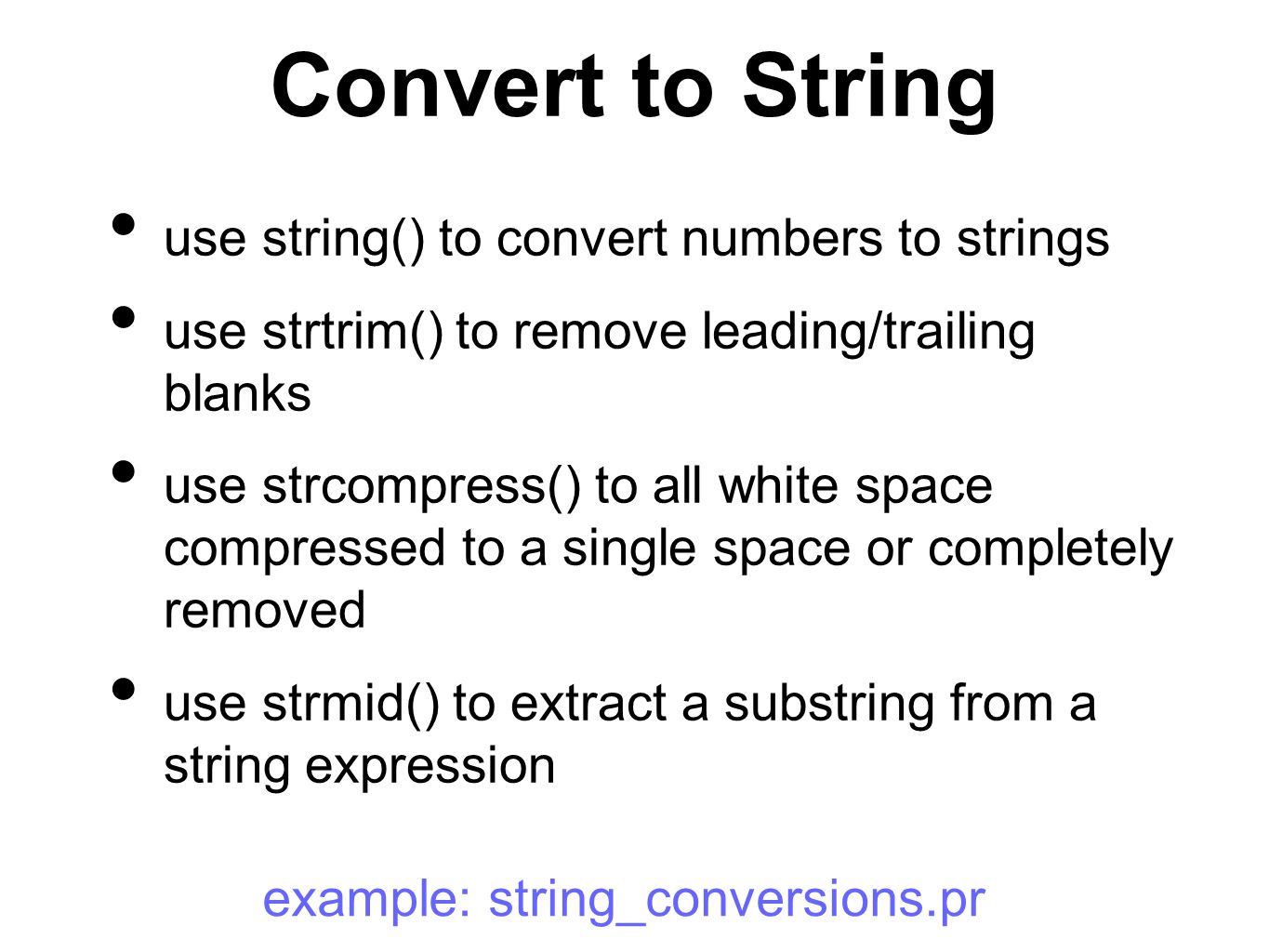

- IDL STRMID HOW TO
- IDL STRMID FULL
Length then proceeds from this position to the right, toward the end of the string. Specifies that First_Character should be counted from the end of the string rather than the beginning. If Length is not supplied, STRMID extracts all characters from the specified start position to the end of the string. If there are not enough characters left in the main string to obtain Length characters, the substring is truncated. It starts after an extensive introduction with general information and weblinks. It consists of a didactic sequence of IDL commands that you should try out on the IDL command line.
IDL STRMID HOW TO
The starting position within Expression at which the substring starts. This compact IDL tutorial is a beginner’s introduction to IDL, showing how to do simple calculations, make plots, write IDL programs. If this argument is not a string, it is converted using IDL's default formatting rules. The expression from which the substrings are to be extracted. If it is greater than 1, the result will have an additional dimension, with the new first dimension having the same size as the stride.
If the stride is 1, the result will have the same structure and number of elements as Expression. If First_Character or Length do not contain enough elements to process Expression, STRMID automatically loops back to the beginning as necessary. If both are arrays, they must have the same stride. If First_Character or Length is an array, the size of their first dimension determines how many substrings are extracted from each element of Expression. 
The result has the same structure and number of elements as Expression.
If a scalar value is supplied for First_Character and Length, then those values are applied to all elements of Expression. Either argument can be a scalar or an array: The form of First_Character and Length control how they are applied to Expression. The result of the function is a string of Length characters taken from Expression, starting at character position First_Character. Result = STRMID( Expression, First_Character , /REVERSE_OFFSET ) Return Value The string we want to remove is highlighted in yellow: myQuote = "It is not in the stars to hold our destiny but in ourselves." extractedStr = STRMID(myQuote, 29, 12, /REVERSE_OFFSET) PRINT, extractedStr Remember that the first character in the original string is at position zero (0): myString = "IDL is fun" subString = STRMID(myString, 4, 2) PRINT, subStringĮxtract a substring from the end of a string (quote from William Shakespeare). ExamplesĮxtract a substring, in this case: “is”, from a longer string and store it in another variable. Each extracted string is the result of removing characters from the input string. The STRMID function extracts one or more substrings from a string expression. Version of IDL used to prepare this article: IDL 8.2.Tip: See also the IDL_String::CharAt, IDL_String::Remove, and IDL_String::Substring methods, which provide similar functionality but with an object-oriented interface. JulTime = ncdfTime / (24*60*60.0D) + JulDay(1,1,1970,0,0,0)ĬalDat, julTime, month, day, year, hour, min, secĪlternatively, you can use the "calendar" format from above to do the conversion for you. The process and use the CalDat function to do the conversion for you. To convert numbers in CF-compliant seconds back to a date, you simply reverse In both cases, the value printed is 1384331482.000.Ĭonverting CF-Compliant Seconds to a Date Returns a substring of a string, by specifying the first character. ReadS, '20131113 083122', jd, FORMAT='(C(CYI4,CMOI2,CDI2,1x,CHI2,CMI2,CSI2))' You can assign ASCII characters to an IDL string by using the string(). Note that this can also be accomplished using the “calendar format” specification in IDL. IDL STRMID FULL
This will work just as well for a string array, too). cron job to generate summary soon Full disk listing outdir('/sxtdata0','/data0')(ismember('sxt',gethost(/short))) outftpconcatdir(outdir,'/ftp/pub/soon. Would do something like this (using a scalar string as the example, but

Would read the two columns of data as a single string array.

I need to convert this informaiton to the "time" variable according to NetCDF CF convention, which requires the time to be in seconds since 00:00:00 (in UTC). QUESTION: I have the date and the UTC time in two columns of my data file as, where YYYY is Year, MM is Month, DD is day, HR is Hours, MI is Minutes, and SE is Seconds.
Coyote's Guide to Traditional IDL Graphics.








 0 kommentar(er)
0 kommentar(er)
